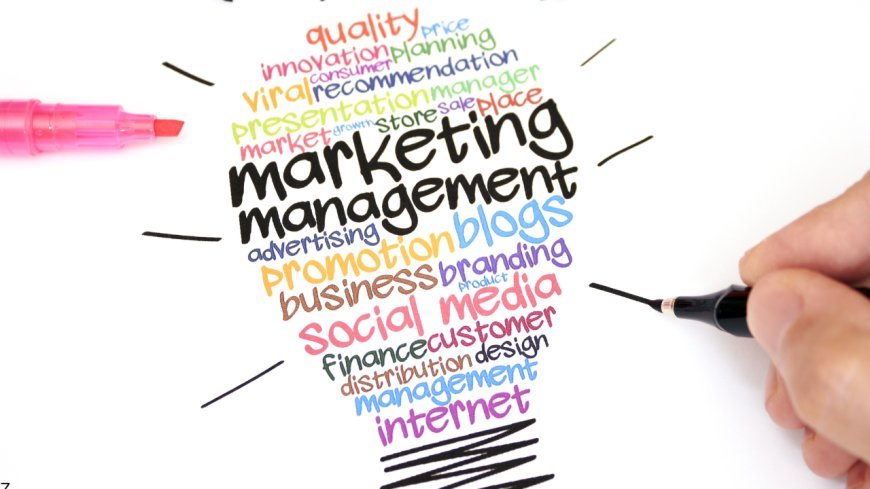How to Market Your Business on a Budget: Smart Strategies for Cost-Effective Promotion
Marketing your business on a budget can feel challenging, but it’s definitely possible with the right strategies. You can effectively reach your audience without spending a fortune by using creative, low-cost marketing ideas.

Marketing your business on a budget can feel challenging, but it’s definitely possible with the right strategies. You can effectively reach your audience without spending a fortune by using creative, low-cost marketing ideas.
From using social media to engage customers to forming partnerships with other small businesses, there are plenty of ways to make your budget work for you.
Investing in your online presence is key. Create engaging content that resonates with your target audience.
You can also build an email list to promote your products or services and keep your customers informed. This direct approach helps create relationships without high costs.
Participating in local events or community sponsorships can also boost your business visibility. Attending trade shows and networking can create valuable connections. Remember, smart marketing doesn’t always require a big budget—it’s about being resourceful and strategic with your efforts.
Developing Your Marketing Plan
Creating a marketing plan helps you understand your market and set goals that align with your business. This plan guides your marketing strategies and helps you stay on budget.
Understanding Your Market and Competition
To thrive, you must know your market well. Start by identifying your target audience. Consider their age, interests, and buying behavior.
Use surveys or social media insights to gather valuable data.
Next, analyze your competition. Look at their strengths and weaknesses. What are they doing well? Where do they fall short? This information helps you find gaps in the market where your business can excel.
You can list your findings in a simple table to keep track of your research:
| Competitor | Strengths | Weaknesses |
|---|---|---|
| Competitor A | Strong online presence | High prices |
| Competitor B | Diverse product range | Poor customer service |
| Competitor C | Great local reputation | Limited marketing reach |
Setting Clear Marketing Goals
Clear marketing goals give your plan direction. Start by outlining what you want to achieve. Do you want to increase sales, boost brand awareness, or engage your current customers?
Make your goals SMART: Specific, Measurable, Achievable, Relevant, and Time-bound.
For example, instead of saying “increase sales,” set a goal like “boost sales by 15% in six months.” Share these goals with your team. When everyone understands the target, it encourages teamwork and accountability.
Allocating Your Marketing Budget Efficiently
A budget keeps your marketing efforts in check. Begin by determining how much you can spend. Review past expenses to guide your budget setting.
Break down your budget into categories, such as online advertising, content creation, and events.
You can create a simple budget table to visualize your expenses:
| Marketing Activity | Budget Allocated ($) |
|---|---|
| Social Media Ads | 500 |
| Content Marketing | 300 |
| Local Events | 200 |
| Total | 1000 |
Adjust your spending as necessary. Monitor your results and see where you get the best return on investment. This way, you can maximize your impact while staying within your budget.
Leveraging Digital Marketing
Digital marketing is a powerful tool that can help you reach your audience without breaking the bank. By focusing on content marketing, social media, and email campaigns, you can create a strong online presence even on a tight budget.
Creating Engaging Content Marketing
Content marketing is essential for attracting customers. Start by creating blog posts that offer valuable information related to your business. Make sure to use keywords that your target audience might search for.
- Use visuals: Include images or infographics to make your posts more attractive.
- Write clearly: Keep your language simple and direct, focusing on key points.
- Encourage interaction: Ask questions or invite comments to engage your readers.
By regularly publishing quality content, you build trust and establish your brand as an authority in your field.
Maximizing Social Media Impact
Social media platforms are great for connecting with your audience. Focus on a few key platforms where your customers spend their time, like Facebook, Instagram, or Twitter.
- Create a posting schedule: Consistency is key. Plan your posts ahead to maintain regularity.
- Engage with followers: Respond to comments and messages promptly. This builds relationships and fosters loyalty.
- Use hashtags: Effective hashtags can broaden your reach and attract new followers.
Sharing user-generated content can also enhance authenticity and encourage community, turning customers into brand advocates.
Effective Email Marketing Campaigns
Email marketing remains one of the most cost-effective ways to reach customers. Start by building an email list through your website or social media.
- Segment your audience: Divide your list into different groups. This allows you to send targeted messages based on interests.
- Create catchy subject lines: Your subject line determines if someone opens your email. Make it intriguing but relevant.
- Include clear calls to action (CTAs): Tell your readers exactly what you want them to do, whether it's visiting your website or making a purchase.
Sending personalized and relevant emails keeps your business top-of-mind for customers and encourages repeat interaction.
Cost-Effective Advertising Methods
When you're working with a limited budget, it's important to use advertising methods that deliver results without breaking the bank. Here are two effective approaches that can help you reach your audience while keeping costs down.
Exploring Pay-Per-Click Advertising
Pay-Per-Click (PPC) advertising is a smart choice for budget-conscious marketers. With this method, you only pay when someone clicks your ad. This means you're not wasting money on ads that don't get seen.
Platforms like Google Ads allow you to set daily budgets to control your spending. By targeting specific keywords relevant to your business, you can attract the right audience.
Make sure to regularly review your ad performance and adjust your keywords and bids accordingly.
To maximize your budget, consider running ads during off-peak times or targeting long-tail keywords. These tend to have lower competition and can result in a higher return on investment.
Utilizing Print Advertising and Direct Mail
While digital marketing is popular, print advertising and direct mail can still be effective. These methods allow you to reach local customers in a tangible way.
For print advertising, think about local newspapers or community bulletins. You can often negotiate prices and reach a targeted audience. Consider using eye-catching designs and clear calls to action.
Direct mail involves sending postcards or flyers to potential customers. You can use mailing lists from local businesses or your own database to ensure you reach your target market.
Personalizing your mail can increase engagement. This method can be cost-effective when you create simple, attractive designs that grab attention.
With both print advertising and direct mail, you can track responses and adjust your strategies based on what works best.
Building Relationships Through Networking
Networking is key to growing your business, even on a budget. By hosting and attending events, and leveraging word-of-mouth marketing, you can form valuable connections that lead to new opportunities.
Hosting and Attending Events
Hosting your own events can be a great way to attract attention without breaking the bank. Consider small gatherings, workshops, or open houses that showcase your business. This creates an inviting atmosphere for potential clients or partners to learn more about what you offer.
Attending industry events also helps you meet people face-to-face. Look for low-cost local events or seminars where you can connect with others. Bring business cards and be ready to introduce yourself.
Make sure to follow up after meeting someone. A simple message thanking them for their time can go a long way.
Meaningful connections often come from real conversations, so focus on building relationships rather than just promoting your business.
Amplifying Word-of-Mouth Marketing
Word-of-mouth marketing is powerful and cost-effective. Happy customers are your best marketers. Encourage your satisfied clients to share their experiences with friends or on social media.
You can motivate them by offering discounts on future services or even a small gift for referrals. Make it easy for them to spread the word about your business.
Remember, personal stories resonate with others. Ask for testimonials that highlight their experience. Share these on your website and social media.
Authentic, real-life recommendations can boost your credibility and ROI without significant costs.
Analyzing and Optimizing for ROI
To market your business effectively on a budget, it’s essential to analyze your return on investment (ROI). This involves measuring sales revenue and conversion rates while adjusting your strategies based on your business's growth stage.
Measuring Sales Revenue and Conversion Rates
Start by tracking your sales revenue closely. This means looking at how much money you make from your marketing efforts. Tools like Google Analytics can help with this.
Next, focus on your conversion rates. This shows how many visitors to your site end up making a purchase. A higher conversion rate means your marketing strategy works well.
Here are some key metrics to track:
- Sales Revenue: Total earnings from sales.
- Conversion Rate: The percentage of visitors who make a purchase.
By keeping an eye on these numbers, you can understand what’s working and what needs adjustment.
Adjusting Strategies for Growth Stage
As your business grows, your marketing strategies should grow with it.
In the startup phase, consider low-cost options like social media marketing or local advertising. They can help you reach customers without breaking the bank.
As you find success, you might want to invest more in targeted ads, SEO, or email marketing. These methods can help raise your brand visibility and drive higher sales revenue.
At each stage of growth, reassess your ROI. This helps you decide where to place your marketing dollars.
For example, if one channel yields a better conversion rate, consider reallocating your budget there.
What's Your Reaction?
 Like
0
Like
0
 Dislike
0
Dislike
0
 Love
0
Love
0
 Funny
0
Funny
0
 Angry
0
Angry
0
 Sad
0
Sad
0
 Wow
0
Wow
0







